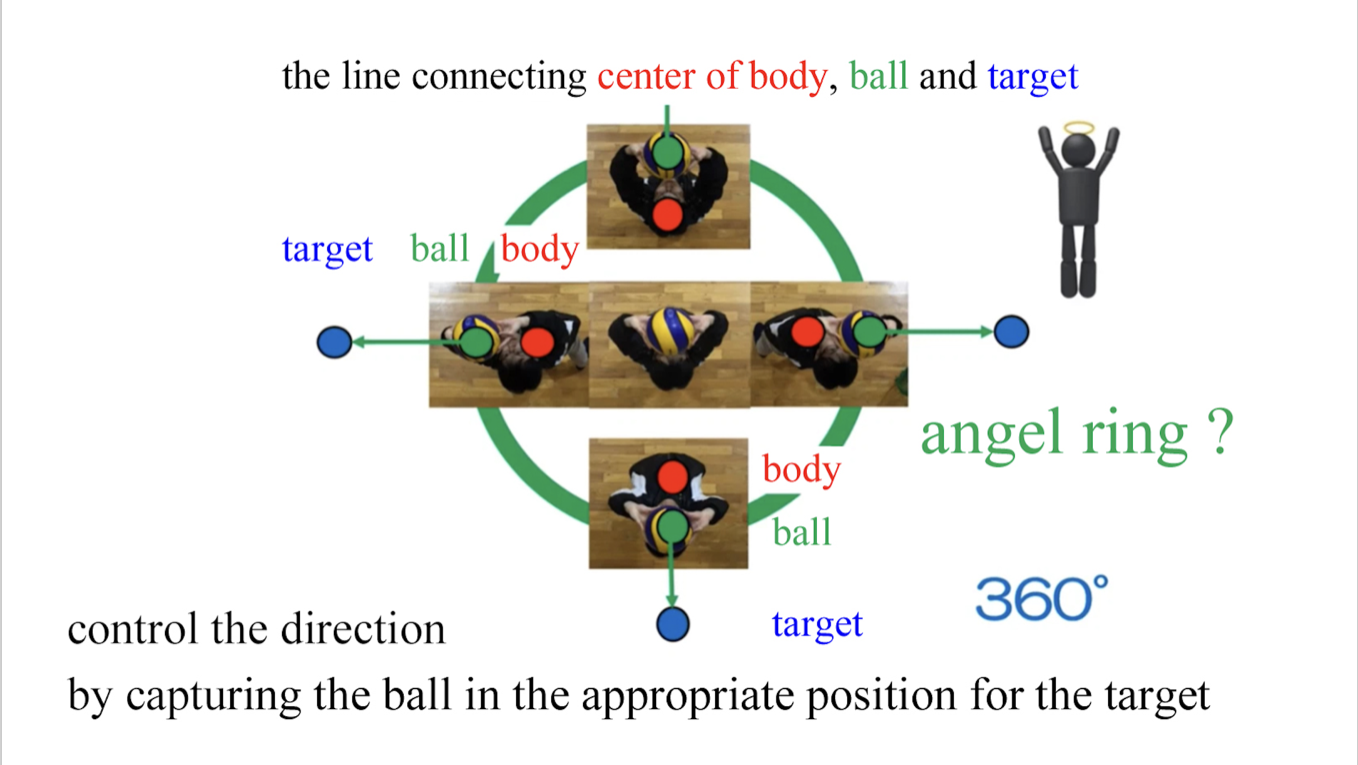How to learn “where to capture the ball to make it fly in the right direction”(1)
As a practice, it is important to thoroughly experiment and try various approaches in order to understand “where to capture the ball to make it fly in the right direction”. You can try understanding the mechanics of setting with the video [Forum] Biomechanics of Setting (Part 2), which can possibly be done at home with a space of about 10㎡.
If you are in a gymnasium, you can use the triangle pass (three people standing in a position forming an equilateral triangle, passing the ball clockwise or counterclockwise) to pass the ball while facing the direction you want it to fly, or pass without rotating while facing the direction the ball is coming from(side set).
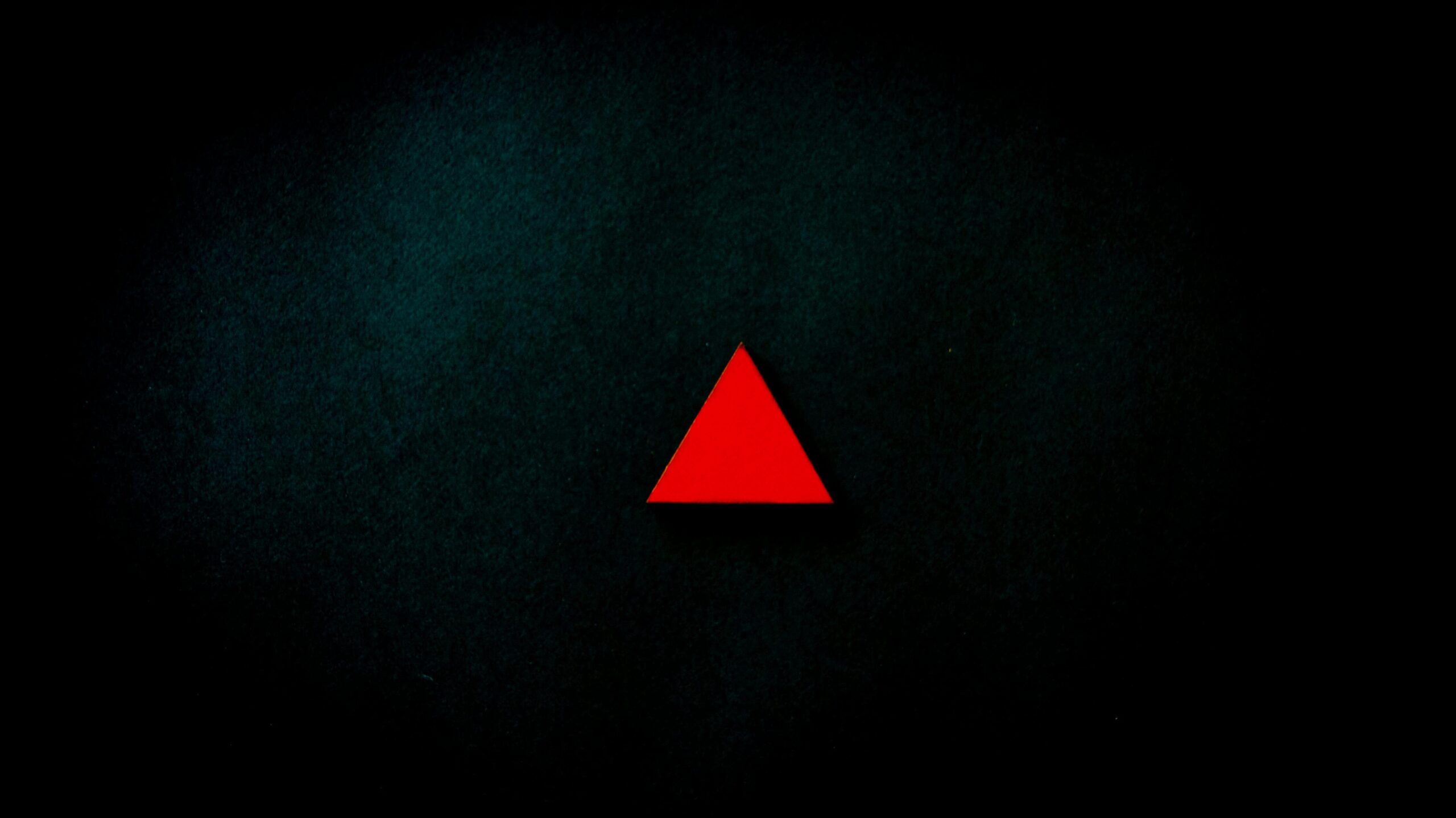
During this process, first, in order to feel the meaning of “where to capture and where the ball will go”, for example, have the player capture the ball in front of their face and then push it away. This way, they will realize that “when you capture it just in front of your face, the ball will have a low trajectory.” Next, they can explore with their own sense of “what angle the ball will fly when captured in front of their forehead” and then “where to capture to make it fly straight up.” Once they understand these differences, they can start looking for where to capture to make the ball fly in a diagonal direction of 60 degrees to the right.
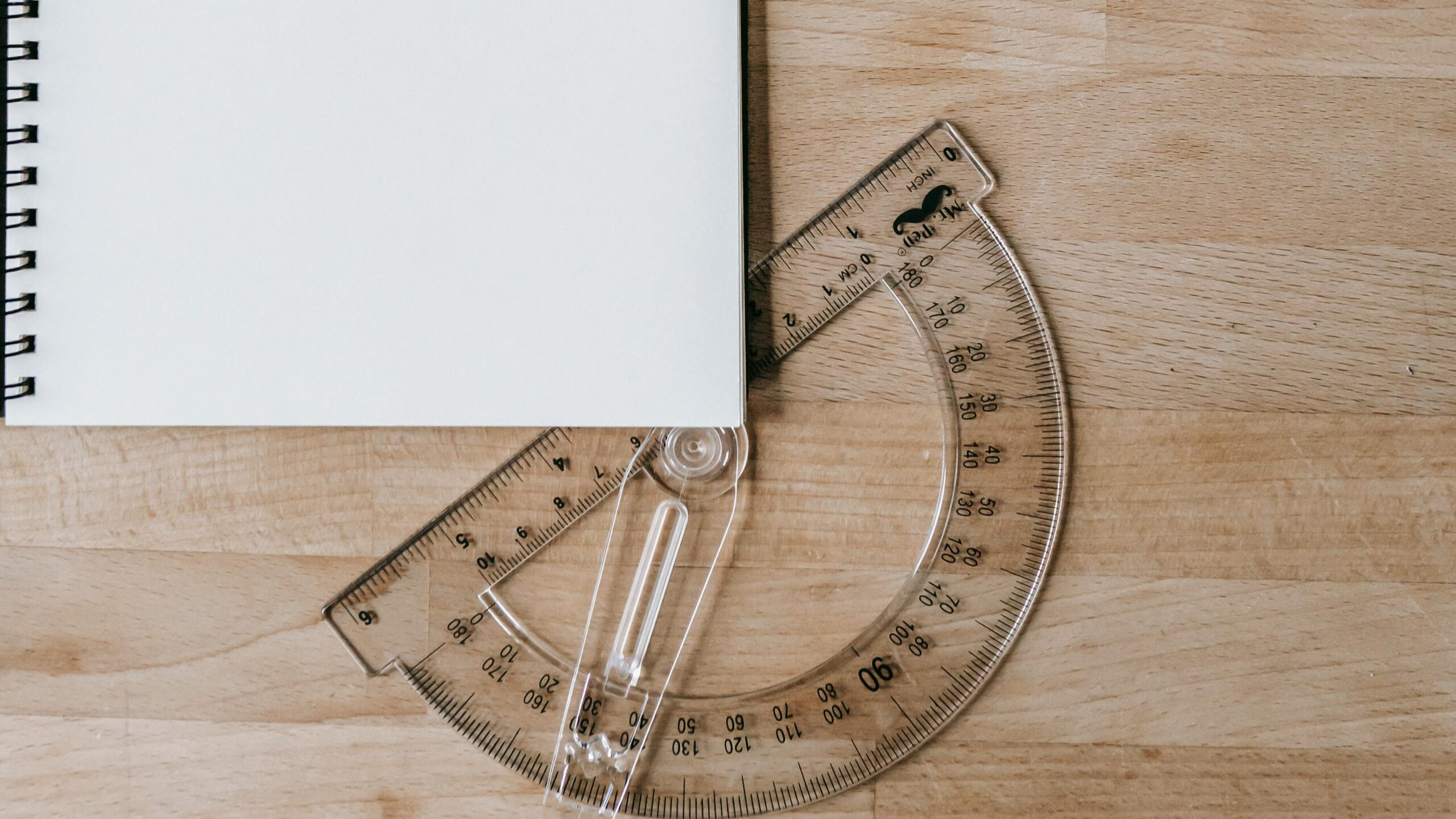
Next, a simple exercise for setting is to do the following from a position far away from the net: “face left and set the ball to the left, face left and set the ball to the right, face your back towards the right and set the ball to the right, face your back towards the right and set the ball to the left”. As a general rule, we do this by “side-setting to the near side with the far side facing forward” (as shown in the figure below, which is introduced in “Coaching Volleyball: Basics” edited by the Japan Volleyball Associations). Of course, there are cases where side-setting to the far side is more accurate control.
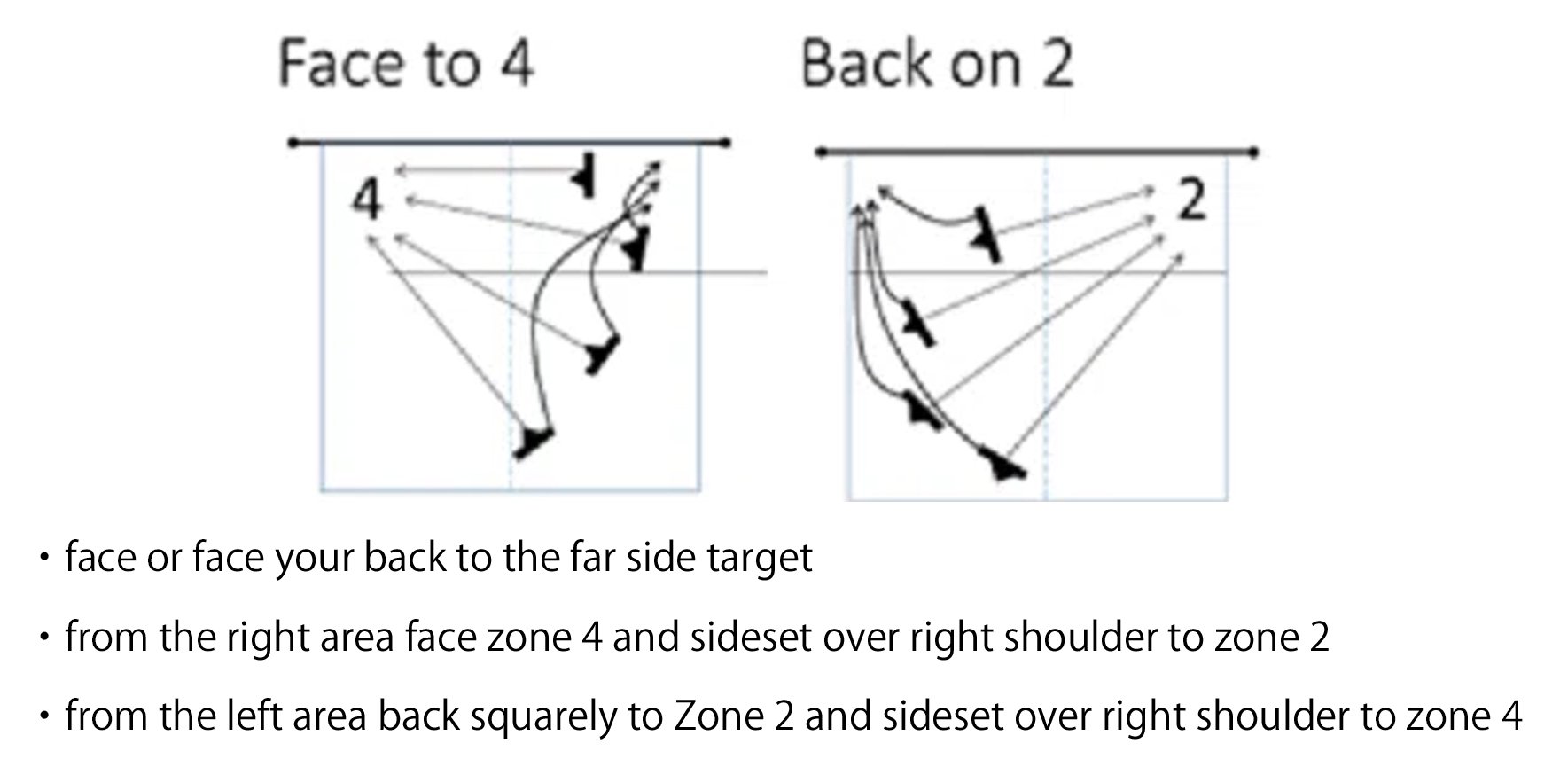
The important thing when moving to the point of ball impact is to anticipate where to stop your body and capture the ball to make it fly where you want. While moving, you should imagine where you want to set and where you need to take your body (creating a line of “body center -> ball -> target”) to achieve that.
This “image” refers to 1) the position of your body, but it also includes 2) the posture that can firmly set the ball to the target. “The positional relationship between the ball and the body” becomes meaningful only after the player has “firmly stabilized the foothold and stopped the body”, so (1) and (2) cannot be separated. (I will reiterate here what is necessary for “directional control,” which I wrote about on 1/5.)
What is necessary for ”direction control”
(1) Capture the ball in the proper position
(2) Take a posture so that the ball flies firmly to the target
You can practice from various positions on the court to be able to set the ball to all the positions you want to set it.
First, we will start with the easy ones and work our way up, one by one, from various positions on the court so that we can do it without the burden of “movement” of the player.
Next, we will add “moving” to the game so that you can gradually grasp the four patterns of “approaching the net”, “moving away from the net”, “moving toward the left”, and “moving toward the right” on the court.
If the player is able to control the ball well, we will increase the difficulty level, and if not, we will go back to the point where the player has the firm sense of contorol, so that the player can confirm the sense of being able to control the ball well. Observe what the player is doing very carefully.
The ball is just offered to the player so that it can be a trial-and-error process of getting what you want the player to get.
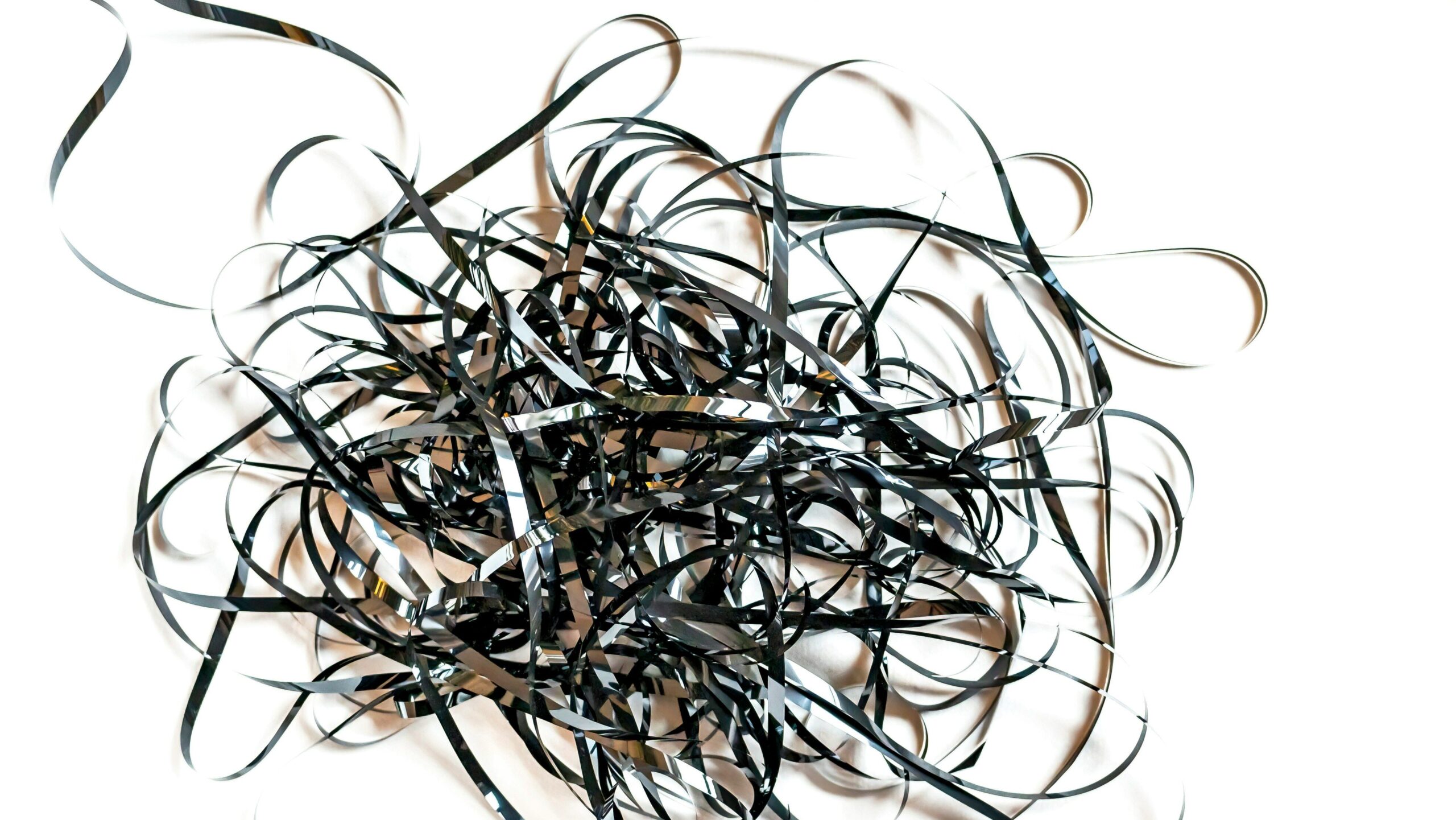
If “the way (details of the play)” is different from your image, offer the same ball again to see if “a set that the player himself is satisfied with” can be set. I want you to offer the players the same ball until they feel that this is the way to do it, and that this is how they should do it to get the set that they imagined.
Then, if you instructor find that there is nothing in the player’s own options of how to do it that he/she imagines, you may teach that option, or you may create a situation in which it would work better to use that option and let the player find it by himself/herself, but it is only “the player’s own trial and error” is the heart of the practice. The instructor’s role is to create and prepare that environment.
